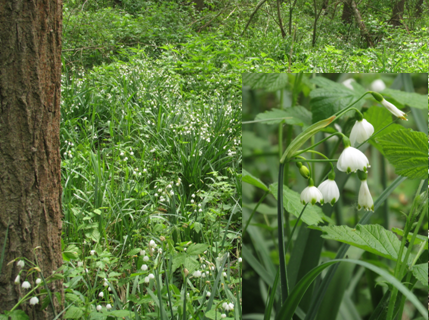Recording new parameters
The flexibility and openness of the methodology of the system means actual needs can be gradually integrated while elements and parameters that can no longer be studied efficiently are eliminated. All of that had to be implemented (and the future will also follow suit) in a manner to retain the opportunity for analysing long term observations. It is also necessary to practice oversight to ensure that the decisions about expanding the system reflect well-thought-out priorities and are appropriate, as only available resources can be mobilised for performing this task.
The paragraphs below discuss in detail the parameters that were introduced during or after the 2010-2014 sampling cycle, and are not part of the data evaluated this time but will be added to forest inventory tables in the future.
Health status: Leaf loss as an indicator of the health status of sample trees in height categories 1-3 was first recorded in 2011. Leaf loss is a parameter that is easy to detect visually and reflects reliably the long term health status of individual trees. Only the top 2/3 section of the crown is evaluated for leaf loss records. Crown breakages, branch decay, leaf browsing and other disturbances of known and unknown origin causing leaf loss are registered cumulatively.
Drilled tree: Since 2011, an increment core sample is taken of a specimen of a tree species that matches the main species populating the sampling plot and has almost identical size parameters and is located outside but in the direct surroundings of the sampling plot. The specimen is drilled at the height of 1.3 m in a direction that matches that of the rule of the calliper, observing the rules of taking diameter measurements. Since 2013 stem measurement has also been taken of drilled specimens in addition to measuring its diameter at breast height.
Recording herbaceous cover: The degree of herbaceous cover and the type of cover (homogeneous or colonial) had been recorded in earlier years as well. Since 2015, typical herbaceous species occurring at sampling plots have also been listed as a new parameter.

Spring snowflake (Leucojum vernum)
Stem quality evaluation: Stem quality evaluation was introduced as a parameter in 2015. This evaluation covers animate or dead sample trees with breast height diameter at or above 16 cm, provided the height of the sample tree is also measured.
The evaluation is composed of two characteristic features. One is the ratio of the volume of "industrial wood" to the volume of the reference base and the other is the general quality classification of this "ratio of industrial wood". The reference base for the m3 volume ratio of industrial wood is the volume of the part of the tree below an imaginary line drawn at half of the full tree height (regardless of the location of the bottom of the crown). The ratio of "industrial wood" to the volume of the reference base is to be estimated. There are three possible grades of quality classification. The combination of these two parameters will provide stem quality.
The considerations presented above suggest that the interlinked systems (Forest Protection Network-Observation of Standard Growth-Habitat Monitoring-Unified Forest Monitoring) have been designed to share areas as much as possible and also with a view to meeting continuity requirements as much as possible. It is also evident that the system of taking forest inventory is not a static system, rather it keeps adapting to and changing in line with external professional expectations, changes and opportunities.